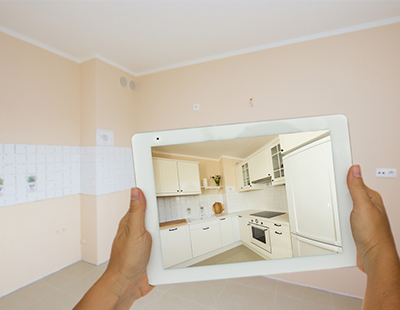We all know that ensuring your property is of a high standard can yield better returns and more loyal tenants, but how can landlords attract strong rental demand for their properties and happy tenants?
Many landlords should consider undertaking widespread refurbishments to their property as, not only will this ensure their tenant is satisfied, but a well considered upgrade may also add capital value to their ‘asset’, according to Adam Kingswood, director of Kingswood Residential Investment Management.
He also points out that refurbished properties can also reduce potential void periods and increase potential returns through increased rental income whilst also reducing maintenance costs.
He said: “It is also important that careful research is undertaken before hammers are taken to walls or paint brushes are brandished,” said
“In our experience the small-scale property investors, often the accidental landlords who’ve inherited a property and are waiting for market values to rise, can become over-enthusiastic with upgrades to their buy to let. Their lack of business acumen can reduce the profitability of their asset.”
To maximise on the value of renovating a buy-to-let property, Kingswood recommends that the following steps are taken.
Do the Maths: Any refurbishment work should be in proportion to the value of the property. Trawl through property adds to check out ceiling market values and look at other rental properties to find out what they are offering in terms of accommodation and rents being asked. Or talk to a local agent about the financial benefits of the proposed work. It’s vital to remember that this is an investment which needs to be profitable. It’s about achieving a balance between the cost of the investment, its maintenance and the rent. It’s all too easy to spend money without seeing a worthwhile return on the investment. So, do the maths and if you are a new landlord, take professional advice.
Ask Yourself, “Why?”: Remember, this is an investment. It is not your home. There is a need to achieve a balance between providing a decent home for tenants and over-refurbishment in the style of Grand Designs. To avoid this and reign in your enthusiasm be firm about what you want to achieve. Ask yourself, are you looking to increase the rental yield? Or are you wanting to make the property more attractive to appeal to renters, thus reducing voids and shortening their length? Perhaps you are taking the long view and wanting to enhance the capital value of the property. Whatever the reason, you should plan for the upgrade to pay for itself within a defined period of time.
Have Your Target Market in Mind: By doing your research of the location you’ll know the kind of renters who are attracted to the area. You’ll know whether a HMO is the best option or whether to aim for families in a single house. This will affect your planning decisions and the level of spend. If looking for longer term tenants then you may opt for higher quality fixtures and finishes. Where there is going to be more rapid turn-over, then economy may be in order as you may have to refurbish more frequently.
Adding impact
Whilst there are no guarantees, in general in my 13 years in the property letting market, I’ve had the pleasure of seeing first-hand how landlords transform their properties to meet the needs of tenants across the market. Budgets may vary but there is a common approach to targeting key areas in any property.
Planning and prioritising is key so that void times are reduced and the work is completed as soon as possible. It’s also important to get the basics right, so that, for example, safety and building worthiness issues are addressed before the budget is spent on designer fixtures.
The two areas which make the most impact on potential tenants are the kitchen and the bathroom. These areas usually provide the greatest “wow” factor and if room upgrades are being considered, are the best place to start.
Costs for this kind of project will vary tremendously according to the target renter but as a minimum, we know that all tenants expect both rooms to be clean and in good order. A new kitchen or bathroom should give a return on investment of around 10% because you can expect to have to replace it every ten years.
Other areas which prospective tenants comment on are:
Carpets and flooring.
Decorations
Fixtures / furnishings
Gardens, especially where the prospective tenants are families
Heating and windows
Communal areas – if you own the building, ensuring communal areas such as the hallway and stairs are well maintained ensures a good first impression when tenants visit the property.
If the above areas are improved upon, not necessarily by replacing, as often a thorough clean can suffice, it can result in increased yields for landlords.
In our experience ensuring your property is well maintained is essential if you want to succeed in property investment.
Your ‘asset’ will be sustainable, the tenancy should run more smoothly and you can increase your rental income, and capital value. These are all significant factors in helping to secure the long term viability of your investment.
Want to comment on this story? If so...if any post is considered to victimise, harass, degrade or intimidate an individual or group of individuals on any basis, then the post may be deleted and the individual immediately banned from posting in future.













.png)






Join the conversation
Be the first to comment (please use the comment box below)
Please login to comment